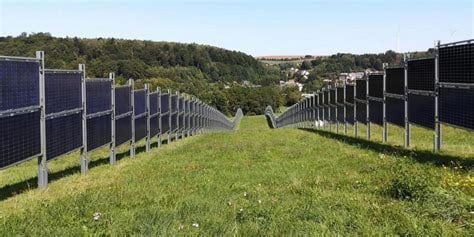

And things like vertical bifacial solar panels can work especially amazingly on grazing land that isn’t suitable for crops.

Counter-intuitive as they may look, they actually have a number of benefits:
- The panels face east and west, meaning they generate peak power in the morning and evening, which corresponds to peak demand => less need for energy storage to bridge the gap between the mid-day peak in production from traditional PV and the aforementioned morning and evening demand peaks.
- The panels are vertical, which makes them easier and cheaper to maintain, as dust, snow, and rain naturally shed from their surfaces.
- The panels get less direct energy during mid-day, keeping their surfaces cooler. Turns out cooler solar panels are more efficient at converting light energy into electrical energy.
- The arrangement lends itself very naturally to agrivoltaics, which means you can derive more yields from a given piece of land and use less land overall than if you had segregated uses.
- The compatibility with agrivoltaics allows farmers to diversify their incomes streams and/or become energy self-sufficient.




Some squatter who bought the rights to it for two twigs and a raspberry back when they were first selling off name rights 200,000 years ago